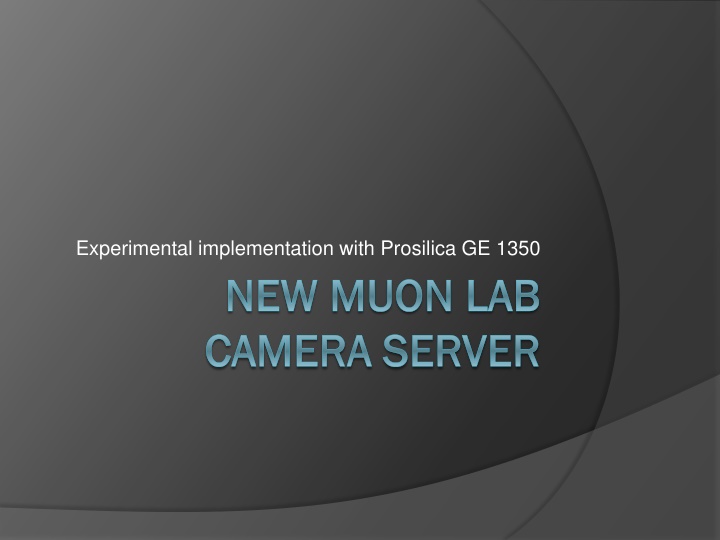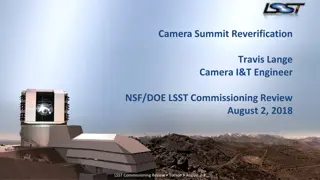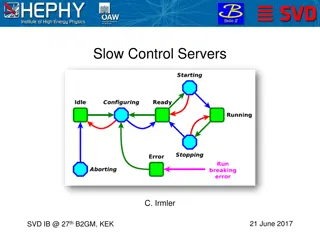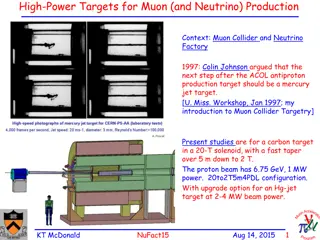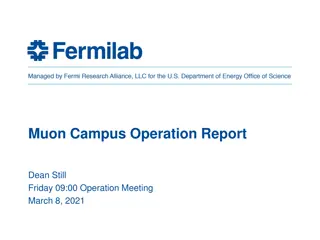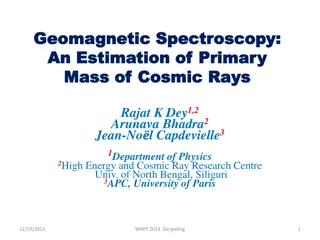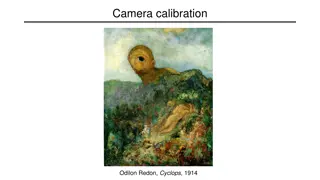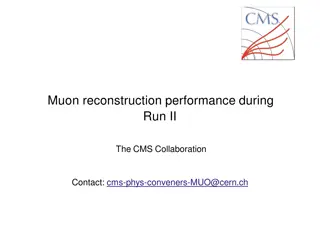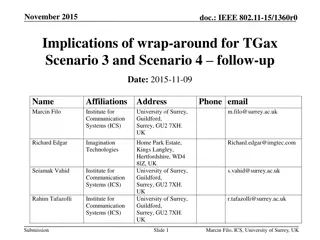Experimental Implementation with Prosilica GE 1350 in New Muon Lab Camera Server
This document explores the implementation of Prosilica GE 1350 in the new Muon Lab Camera Server setup. It details the proposed structure, camera network, components like Cisco Catalyst 2960G Switch, Dell Precision T3400 PC, camera front-end developed by CAR9 at U of C, camera main control, image acquisition, and image viewer using Java. The content also includes details on the image acquisition demo scenarios showing data consumption for different frame rates.
Download Presentation

Please find below an Image/Link to download the presentation.
The content on the website is provided AS IS for your information and personal use only. It may not be sold, licensed, or shared on other websites without obtaining consent from the author.If you encounter any issues during the download, it is possible that the publisher has removed the file from their server.
You are allowed to download the files provided on this website for personal or commercial use, subject to the condition that they are used lawfully. All files are the property of their respective owners.
The content on the website is provided AS IS for your information and personal use only. It may not be sold, licensed, or shared on other websites without obtaining consent from the author.
E N D
Presentation Transcript
Experimental implementation with Prosilica GE 1350 NEW MUON LAB NEW MUON LAB CAMERA SERVER CAMERA SERVER
Components Switch Cisco Catalyst 2960 G Switch Connectivity 24 or 48 ports of Gigabit Ethernet desktop connectivity Industry first PoE+ with up to 30W per port to support the latest PoE+ capable devices Optional four 1 Gigabit Ethernet SFP or two 10 Gigabit Ethernet SFP+ Uplinks Camera Server PC Dell Precision T3400 Dual Ethernet cards Connect to both control network and camera network
Camera Front End Area Detector Developed by CAR9 at U of C An extended module on top of EPICS system Provide a standard interface defining the functions and parameters that a detector driver must support. Provide a set of base EPICS records that will be present for every detector using this module. This allows the use of generic EPICS clients for displaying images and controlling cameras and detectors. Allow easy extensibility to take advantage of detector-specific features beyond the standard parameters. Have high- performance. Applications can be written to get the detector image data through EPICS, but an interface is also available to receive the detector data at a lower-level for very high performance. Provide a mechanism for device-independent real-time data analysis such as regions-of-interest and statistics.
Camera Front End cont. Layer 7 Acnet to EPICS Interface Acnet Clients (EDM, Image J) Very Problematic Vendor s Linux Driver
DEMO Start and stop Single, Continuous, Stream Image J viewer launch from apc-con01.fnal.gov Can t dump image to clx system right At 20 Hz (free run) 1.3 MB X 20 per second = 26 MB per second 1 min consume = 1560 MB = 1.5 GB 30 min lunch without shutting off the image acquisition will cost 46.8 GB. At 5 Hz 1.3 X 5 = 6.5 MB per second 1 min consume = 390 MB 30 min lunch without shutting off the image acquisition will cost 11.7 GB
Major Problems EPICS Getaway BUSY module (allows CA clients to indicate completion in a way that works with EPICS putNotify/ca_put_callback mechanism) -- the CA gateway converts ca_put() into a ca_put_callback() to the IOC .. for most records the ca_put_callback() will complete almost immediately and you won't notice the difference. However the busy record type is deliberately designed to not report completion until all of the underlying operations kicked off by your put have completed, and in your case that probably means until the camera's exposure has completed, which I'm guessing is taking longer than the default 1 second time-out that caput() waits for the CA operation to complete.. Workaround Go through non-gatewayed path (disabled a lot other features that need use BUSY) Proposed Solutions Upgrade Fermi lab EPICS version to 3.14.11 that supports latest BUSY module.
Major Problems MEDM Lab only support EDM MEDM to EDM convector tool is not bullet proof Storage What is the best mechanize for image retriever? Storage space?
Future Action Camera Resolve compatibility issues between EPICS and Acnet Ensure all EDMs running from CLX system Deploy 2nd camera to the network and analysis the network traffic Move existing camera setting to A0 south cave Obtain images, use MatLab to determine the image quality Define the constraints for camera use. Rules for how operator should use the camera Image limits, concurrency limits, continuous run limits
